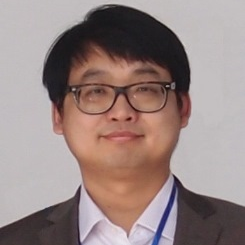Doping and Defect Engineering in Semiconductors
A special issue of Materials (ISSN 1996-1944). This special issue belongs to the section "Quantum Materials".
Deadline for manuscript submissions: closed (10 November 2023) | Viewed by 4486
Special Issue Editor
Special Issue Information
Dear Colleagues,
Semiconductors are particularly useful in industry as their electronic and optical properties are sensitive to dopants and defects. The well-known pn junction is typically achieved by boron and phosphorus doping in silicon, which serve as shallow acceptors and donors. Deep level defects such as gold in silicon affects the recombination rate of excess carriers. However, the emergence of new semiconductors such as oxide semiconductors, 2D semiconductors, and organic semiconductors call for new doping technologies and a new understanding of the dopants and defects in semiconductors. Surface transfer doping and remote doping are representative examples.
On the other hand, renewed characterization techniques as well first principles calculations add to our understanding of doping and defect engineering in semiconductors. In particular, new functionals, such as SCAN and TB09, and new methods, such as DFT-1/2 and shell DFT-1/2, could enable ab initio calculations of dopants and defects in semiconductors, which requires the establishment of large supercells, while maintaining band gap accuracy. It is now time to obtain a deep understanding of dopants and defects in semiconductors from fundamental quantum mechanics.
Therefore, the aim of this Special Issue is to advance and disseminate knowledge in all the related areas of doping and defect engineering in semiconductors. Recommended subjects are listed below, but submissions are not limited to papers covering these key words. The Editor encourages the submission of innovative findings, methodologies, and experimental results to this Special Issue.
Dr. Kan-Hao Xue
Guest Editor
Manuscript Submission Information
Manuscripts should be submitted online at www.mdpi.com by registering and logging in to this website. Once you are registered, click here to go to the submission form. Manuscripts can be submitted until the deadline. All submissions that pass pre-check are peer-reviewed. Accepted papers will be published continuously in the journal (as soon as accepted) and will be listed together on the special issue website. Research articles, review articles as well as short communications are invited. For planned papers, a title and short abstract (about 250 words) can be sent to the Editorial Office for assessment.
Submitted manuscripts should not have been published previously, nor be under consideration for publication elsewhere (except conference proceedings papers). All manuscripts are thoroughly refereed through a single-blind peer-review process. A guide for authors and other relevant information for submission of manuscripts is available on the Instructions for Authors page. Materials is an international peer-reviewed open access semimonthly journal published by MDPI.
Please visit the Instructions for Authors page before submitting a manuscript. The Article Processing Charge (APC) for publication in this open access journal is 2600 CHF (Swiss Francs). Submitted papers should be well formatted and use good English. Authors may use MDPI's English editing service prior to publication or during author revisions.
Keywords
- surface transfer doping in semiconductors
- remote doping
- doping and defect engineering in 2D materials
- doping and defect engineering in organic semiconductors
- electronic structure of dopants and defects
- recombination in semiconductors
- theoretical calculation for dopants and defects
Benefits of Publishing in a Special Issue
- Ease of navigation: Grouping papers by topic helps scholars navigate broad scope journals more efficiently.
- Greater discoverability: Special Issues support the reach and impact of scientific research. Articles in Special Issues are more discoverable and cited more frequently.
- Expansion of research network: Special Issues facilitate connections among authors, fostering scientific collaborations.
- External promotion: Articles in Special Issues are often promoted through the journal's social media, increasing their visibility.
- Reprint: MDPI Books provides the opportunity to republish successful Special Issues in book format, both online and in print.
Further information on MDPI's Special Issue policies can be found here.






